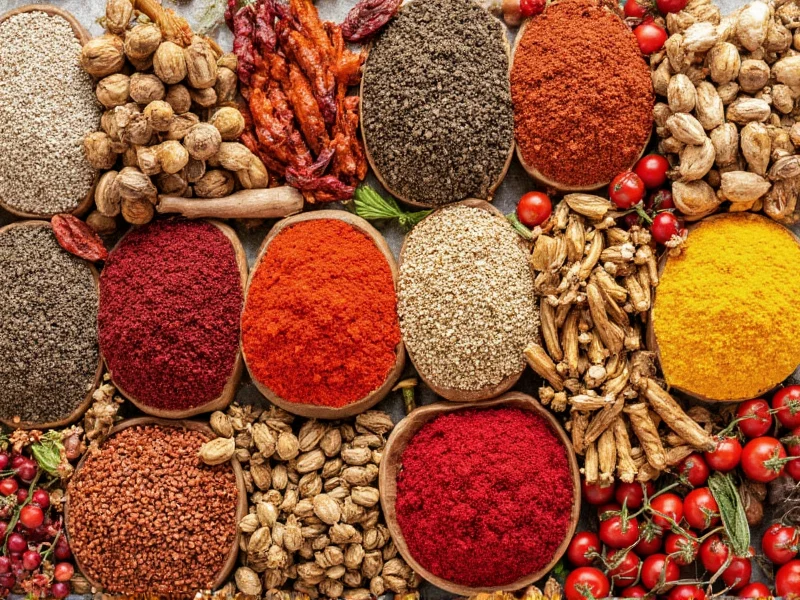The 10 essential spices every home kitchen should have are: salt, black pepper, paprika, cumin, garlic powder, onion powder, oregano, cinnamon, red pepper flakes, and turmeric. These foundational spices cover sweet, savory, spicy, and earthy flavor profiles needed for most global cuisines.
Building a well-stocked spice collection doesn't require hundreds of jars. As a culinary professional with two decades of experience, I've found that a carefully selected core group of spices provides maximum versatility while minimizing clutter. The right foundational spices transform simple ingredients into extraordinary meals, whether you're making weeknight dinners or special occasion dishes.
Why These 10 Spices Form the Perfect Foundation
Before diving into specifics, understand that these particular spices were chosen based on three critical factors: versatility across cuisines, shelf stability, and frequency of use in everyday cooking. Unlike trendy or single-purpose spices, these workhorses appear in 80% of recipes across multiple culinary traditions. This strategic approach to spice selection saves both money and cabinet space while dramatically improving your cooking results.
The Essential Spice Collection Breakdown
Let's examine each essential spice, including why it's indispensable, its flavor profile, and how to use it effectively in your cooking.
| Spice | Flavor Profile | Essential Uses | Pro Tip |
|---|---|---|---|
| Salt | Mineral, enhances all flavors | Seasoning all cooked dishes, baking | Keep kosher salt for cooking and flaky sea salt for finishing |
| Black Pepper | Sharp, floral, mildly spicy | Meats, vegetables, sauces, eggs | Grind fresh for maximum flavor impact |
| Paprika | Sweet, earthy, mild pepper flavor | Stews, rubs, deviled eggs, roasted vegetables | Choose Hungarian sweet paprika for authentic flavor |
| Cumin | Earthy, warm, slightly smoky | Tacos, chili, curries, roasted vegetables | Toast whole seeds before grinding for deeper flavor |
| Garlic Powder | Concentrated garlic flavor | Rubs, marinades, sauces, dressings | More consistent than fresh garlic in dry rubs |
| Onion Powder | Sweet, pungent onion flavor | Meatloaf, soups, stews, roasted vegetables | Perfect when fresh onions would overpower a dish |
| Oregano | Earthy, slightly bitter, herbal | Pizza, pasta sauces, grilled meats, Mediterranean dishes | Mexican oregano works better in Latin American recipes |
| Cinnamon | Sweet, warm, woody | Baking, oatmeal, curries, roasted sweet potatoes | Ceylon cinnamon is milder and more complex than cassia |
| Red Pepper Flakes | Sharp heat, slightly fruity | Pasta dishes, pizza, soups, stir-fries | Add early for infused heat, late for sharper kick |
| Turmeric | Earthy, slightly bitter, peppery | Curries, rice dishes, roasted vegetables, golden milk | Always pair with black pepper to increase absorption |
Maximizing Your Essential Spice Collection
Understanding how to combine these foundational spices creates infinite flavor possibilities. The magic happens when you learn basic spice pairings that work across multiple cuisines. For home cooks wondering what spices should i have for everyday cooking, these combinations provide immediate value:
- Mediterranean blend: Oregano + garlic powder + red pepper flakes
- Mexican foundation: Cumin + paprika + garlic powder
- Curry base: Turmeric + cumin + cinnamon
- Comfort food trio: Paprika + garlic powder + onion powder
These combinations form the backbone of thousands of recipes. When exploring what spices to have in kitchen for versatility, focus on mastering these pairings before expanding your collection. Many home cooks make the mistake of buying too many single-purpose spices that rarely get used.
Proper Spice Storage for Maximum Freshness
Even the best spices lose potency when stored improperly. Understanding what spices should i have is only half the battle—preserving their flavor matters equally. Follow these storage guidelines to extend your spices' shelf life:
- Store in airtight containers away from heat and light
- Keep away from the stove (heat degrades spices quickly)
- Buy whole spices when possible and grind as needed
- Label containers with purchase dates
- Replace ground spices every 6-12 months, whole spices every 1-2 years
A simple test for spice freshness: rub a small amount between your fingers and smell. If the aroma is weak or musty, it's time to replace that spice. This practical approach ensures your essential spices deliver maximum flavor impact in every dish.
Strategic Expansion Beyond the Basics
Once comfortable with the core 10 spices, consider these strategic additions based on your cooking preferences. Many home cooks ask what spices should i have after mastering the basics, and the answer depends on your culinary interests:
- For baking enthusiasts: Nutmeg, allspice, cardamom
- For global cuisine explorers: Coriander, curry powder, sumac
- For meat lovers: Mustard powder, celery seed, smoked paprika
- For healthy eating: Ginger, fenugreek, za'atar
Remember that the most valuable spice collection isn't the largest—it's the one you actually use. When determining what spices to have in kitchen for your specific needs, prioritize spices that align with your regular cooking habits rather than collecting for the sake of having many options.
Building Flavor Confidence Through Spice Mastery
The journey to understanding what spices should i have begins with these essentials but continues through experimentation. Start by using one new spice per week in familiar recipes. Notice how cumin transforms a simple bean soup or how a pinch of cinnamon elevates tomato-based pasta sauce. This incremental approach builds your flavor intuition without overwhelming your senses or your budget.
Professional chefs know that spice mastery comes from understanding ratios and timing, not just having many options. When exploring what spices to have in kitchen for everyday cooking, focus on developing your palate's sensitivity to these foundational flavors. Within months, you'll develop an intuitive sense for balancing and layering these essential spices to create restaurant-quality dishes at home.











 浙公网安备
33010002000092号
浙公网安备
33010002000092号 浙B2-20120091-4
浙B2-20120091-4